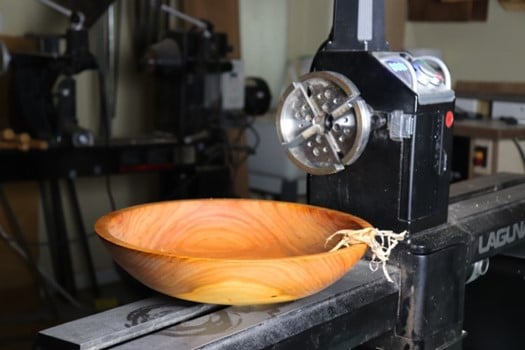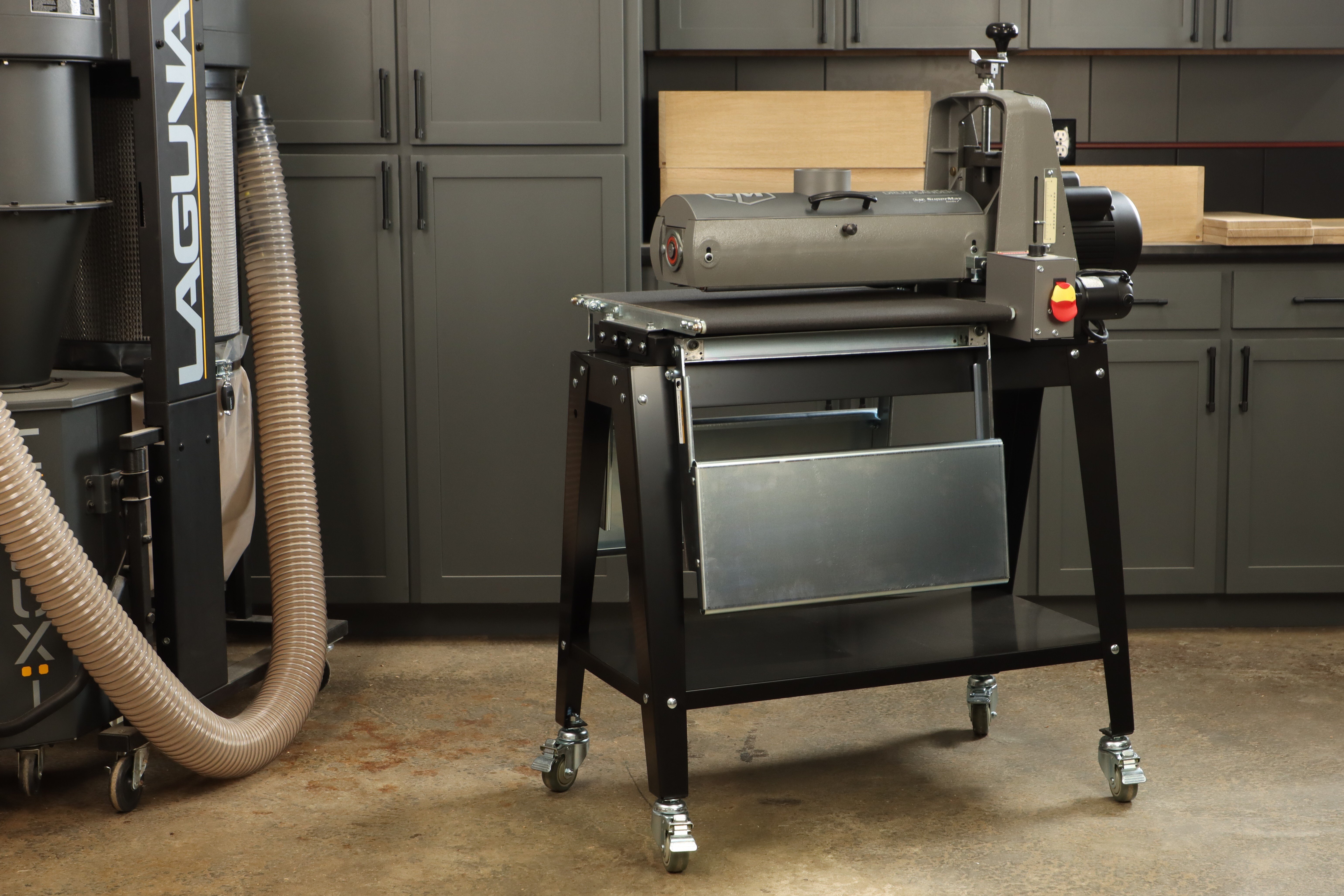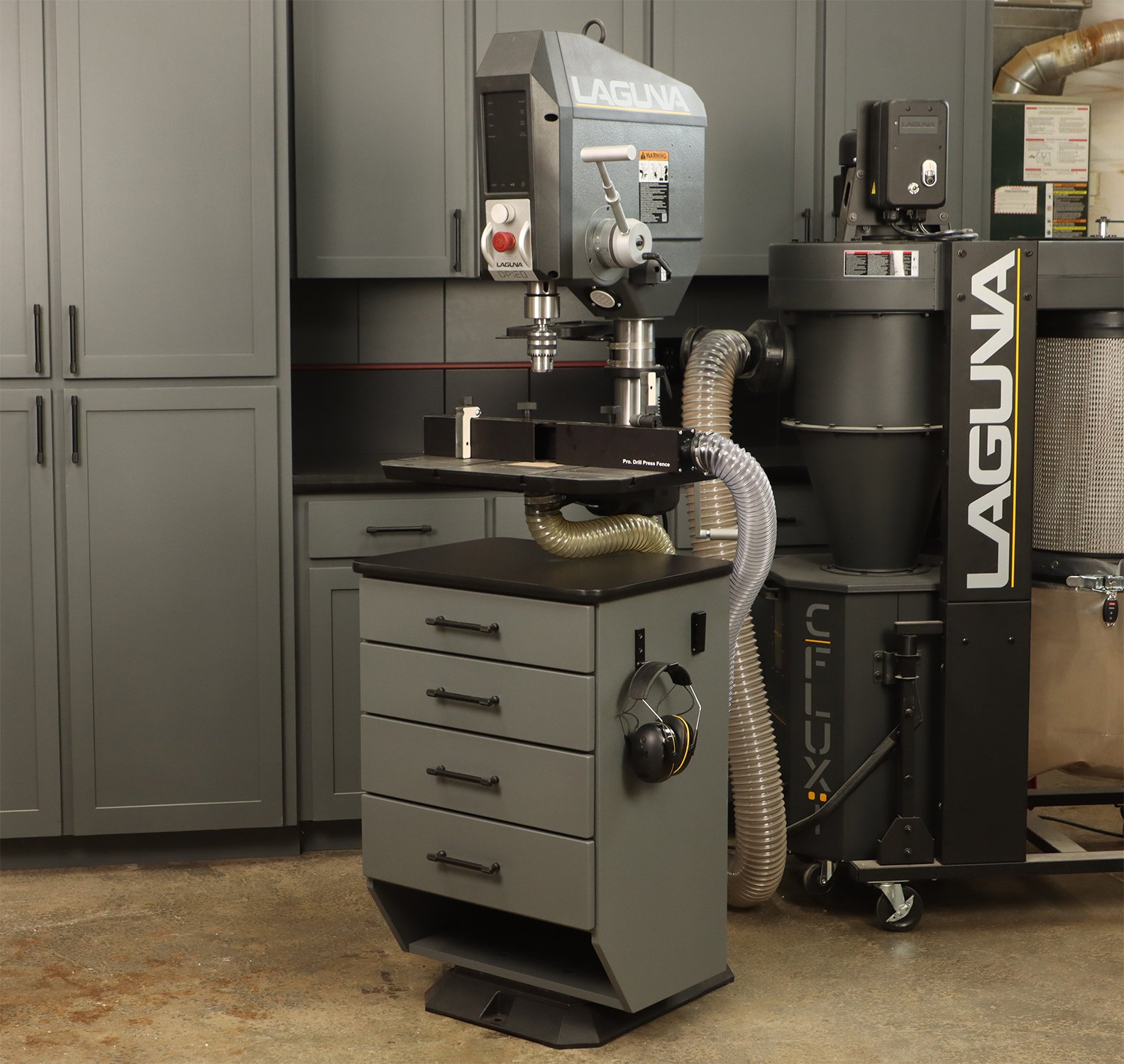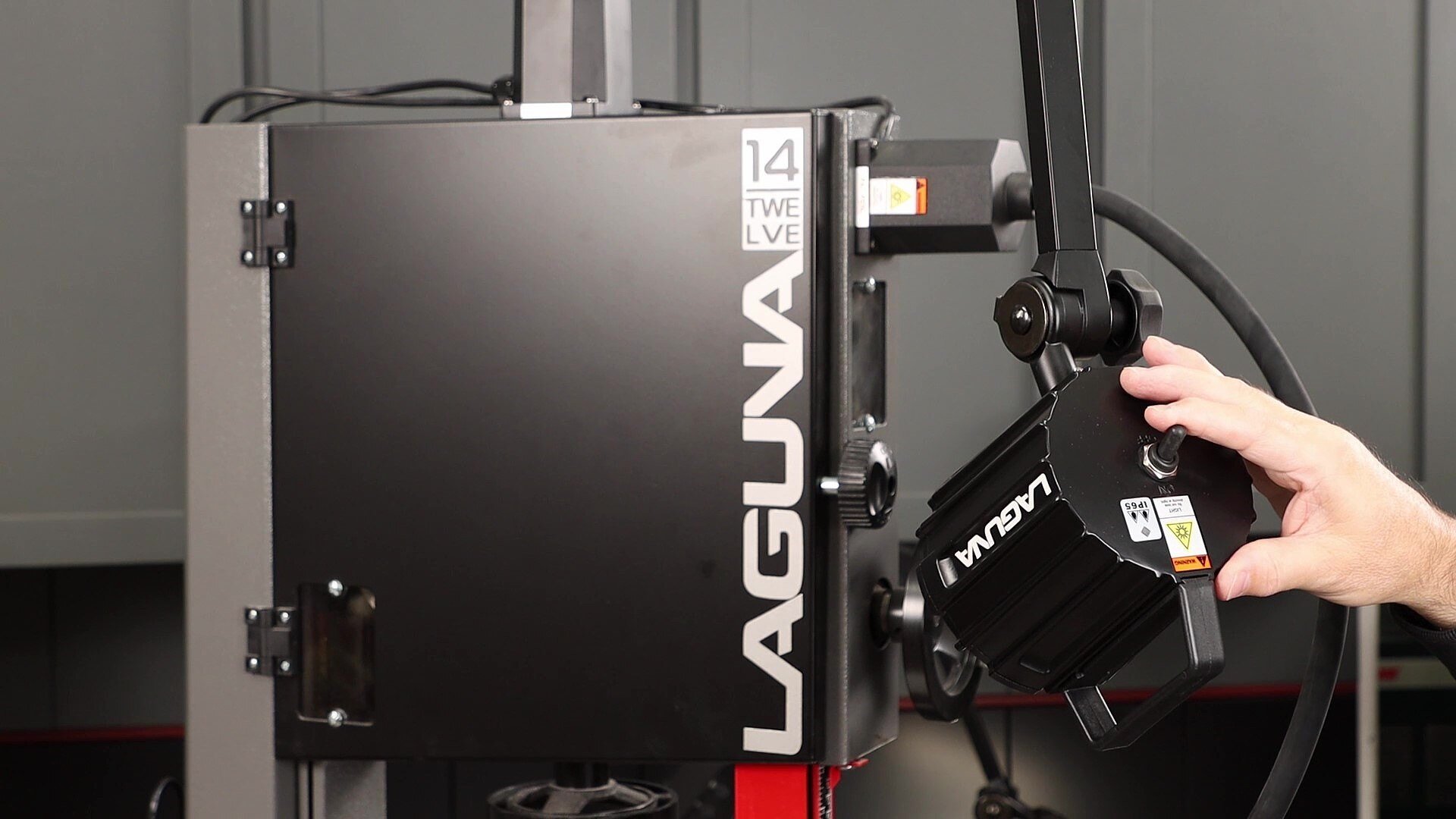Woodturning has become one of the most popular crafts in recent years, and many woodturners start their journey by purchasing a midi lathe. Why not? It can fit neatly into a corner in garage or basement, and doesn’t put a major strain on a household budget. In recent years, manufacturers have embraced the popularity of this versatile lathe category by increasing the power, heft and performance of mid-sized lathes to enable midi owners to more easily pursue bowl turning. Some lathes, such as the Laguna 1216, even provide an outboard turning option to enable larger bowls to be turned. But how far should a person push the capabilities of a mid-sized lathe for turning large bowls? Let’s explore that by first understanding what a lathe must be able to do to support turning large bowls. In theory, a lathe should be able to turn a bowl up to its maximum swing size, but there are many variables to consider, and common sense suggests that there are other limiting factors. Turning large bowls can place stress onto the lathe’s bearings, motor and frame, accelerating the wear, so if your midi lathe provides an expanded capacity via outboard turning, here are a few suggestions to consider.
Start small and work your way up. Turning a large bowl on a midi lathe will take some skill and finesse, particularly if you are not able to utilize the tail stock to stabilize the bowl as you rough it out. To gain the skills necessary to complete your large bowl safely, I’d suggest turning a couple dozen smaller bowls first, that fit within the standard capacity (inboard) of your lathe. If you are still experiencing frequent catches, you’re not ready. Once you feel confident that your skills are ready to scale up your bowl size, do so slowly, in small increments. That way you can stay safe, and you’ll get a better feel for what you and your lathe can handle.

Use a good chuck. It’s important to use a quality four-jaw chuck for bowl turning in general, but when you are turning without the use of the tail stock it becomes critical. I’d suggest a highly rated four-jaw chuck and a set of large jaws to add greater stability and control.
Green vs. Dry wood. Turning wood that reads at least 20% moisture content takes a lot less force than turning dry wood, so in green turning the cutting action tends to bog down the motor less. On the other hand, a high moisture content means a lot more weight, so I’d suggest letting the blank dry to 20-30%, rather than turning immediately after the log is cut. To manage this carefully, apply a coat of sealer to the blank immediately after cutting, and monitor with a good quality moisture meter to know when it is time to turn it.

Add some weight. A few well-placed bags of sand or water softener salt can help reduce vibration during turning. For a midi lathe, a couple hundred pounds should help a lot, effectively doubling the mass of the lathe itself. Don’t get too carried away when adding weight, however, because it’s important to maintain your ability to monitor the lathe’s feedback regarding it’s turning load. The lathe will tell you if it can’t handle the large bowl blank, and you should listen.

Light cuts. Compared to turning smaller bowls, you will likely find that you will have to ease up on your cutting depth. A little patience will go a long way toward producing an heirloom-quality large bowl on your midi lathe.
If you want to watch this 14” salad bowl turned on a Laguna 12|16 midi lathe, check out the video on the ToolMetrix YouTube channel.





